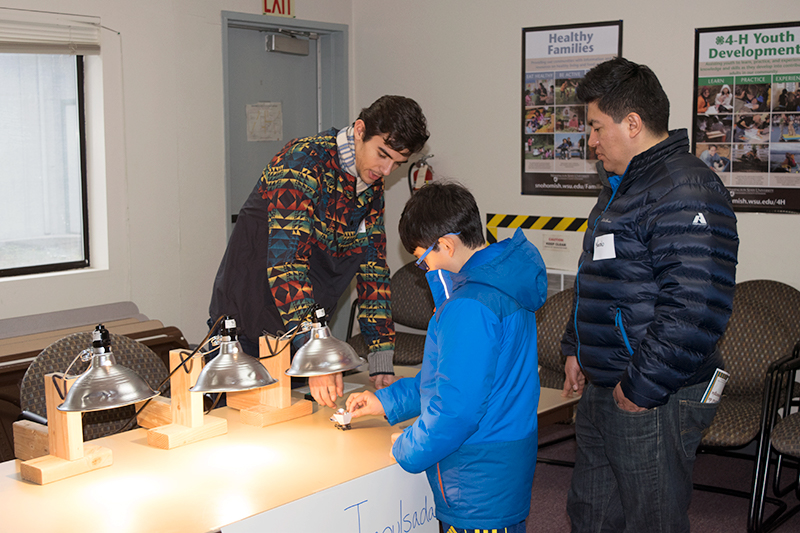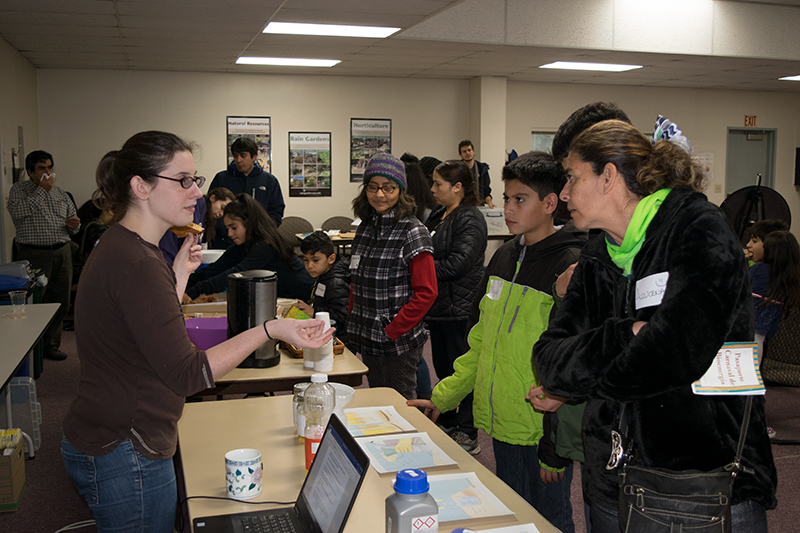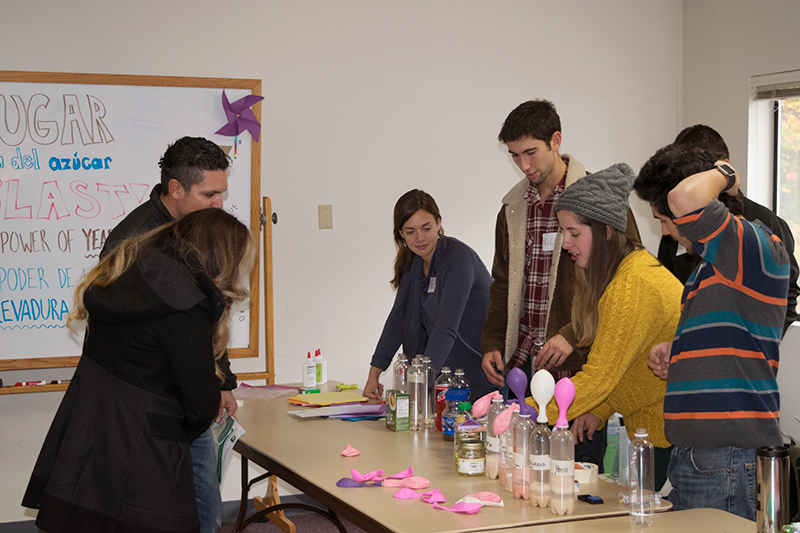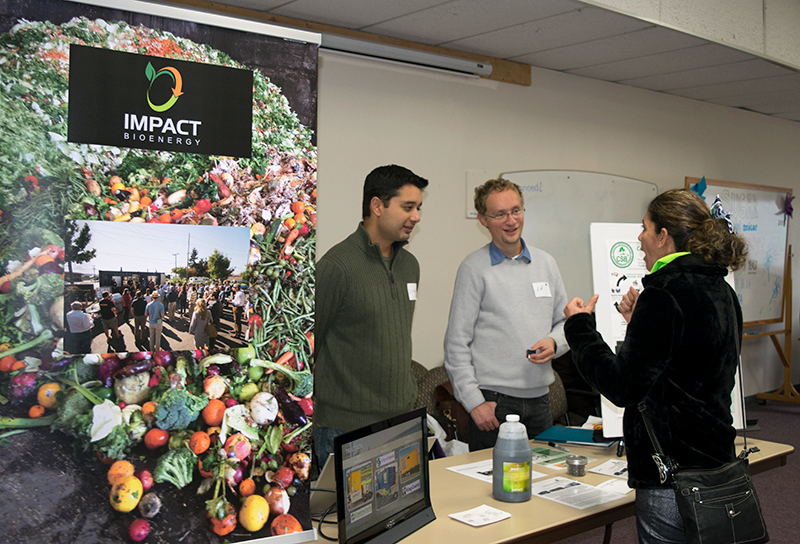By Noelle Hart, WSU Extension | February 2018
Learn, win, and have fun at the bioenergy carnival! The whole family is welcome!
That’s how the AHB Extension team promoted the Bioenergy Carnival, held November 5th at the Snohomish County Extension Office in Everett, WA. Despite winter weather conditions and a Seattle Seahawks game, we had a great turnout. Seventy-five people, including volunteers and hosts, joined us for the carnival, and it was indeed fun and educational for all.


The Bioenergy Carnival provided Latino families with a chance to learn together through hands-on activities and science demonstrations, with the aid of bilingual volunteers. The central theme was energy and the environment. Lessons covered energy efficiency, wind/hydro/solar power, biofuels, wood energy, and food waste for energy. Visitors raced solar cars, built pinwheels, mixed liquids and yeast to test for sugar content, poured water over a model waterwheel, spun a question wheel, compared energy usage of different light bulbs, and more.



To make things even more exciting, we held a raffle. To earn tickets, families collected stamps in their “Pasaporte Carnival de Bioenergía” at stations around the room. Winners went home with energy efficient prizes like LED lightbulbs and low-flow showerheads.



We were fortunate to collaborate with multiple organizations for the carnival. Our primary co-sponsor was the Northwest Earth and Space Sciences Pipeline (NESSP). As a “virtual NASA center,” through Washington NASA Space Grant Consortium at the University of Washington (UW), NESSP strengthens science, technology, engineering, and mathematics (STEM) education in underserved and underrepresented communities. UW student volunteers from NESSP ran multiple stations, helped with set-up, and brought enthusiasm and excitement.



“Participating in the Bioenergy Carnival…was a great opportunity for the Northwest Earth and Space Sciences Pipeline (NESSP) to collaborate with WSU Extension, but more importantly, to connect with Latino families in Snohomish County and fulfill our mission to increase the access to STEM-oriented activities for underserved communities,” said Isabel Carrera Zamanillo, NESSP Outreach Specialist. “For many of our volunteers, this was the first time they had the chance to share their love for science with Latino families. What a better way to promote inclusivity and social integration.”

In addition to volunteers from NESSP, we also had volunteers from WSU Extension Snohomish County’s Promotores program and representatives of Impact Bioenergy, a company that builds community-scale systems to turn food waste to energy. Snohomish County PUD provided educational display materials, like a meter box and a miniature wind turbine. Bonneville Power Administration sent brochures, pens, and coloring books to give away.
Thank you to our volunteers, sponsors, and visitors alike! And for those who would have otherwise been watching the Seahawks, it may have turned out for the best given the final score.
Interested in having a similar event hosted in your community or for your organization? Please let us know! We are looking for ideas of places to hold another Bioenergy Carnival this coming spring or summer. Email noelle.hart@wsu.edu.

